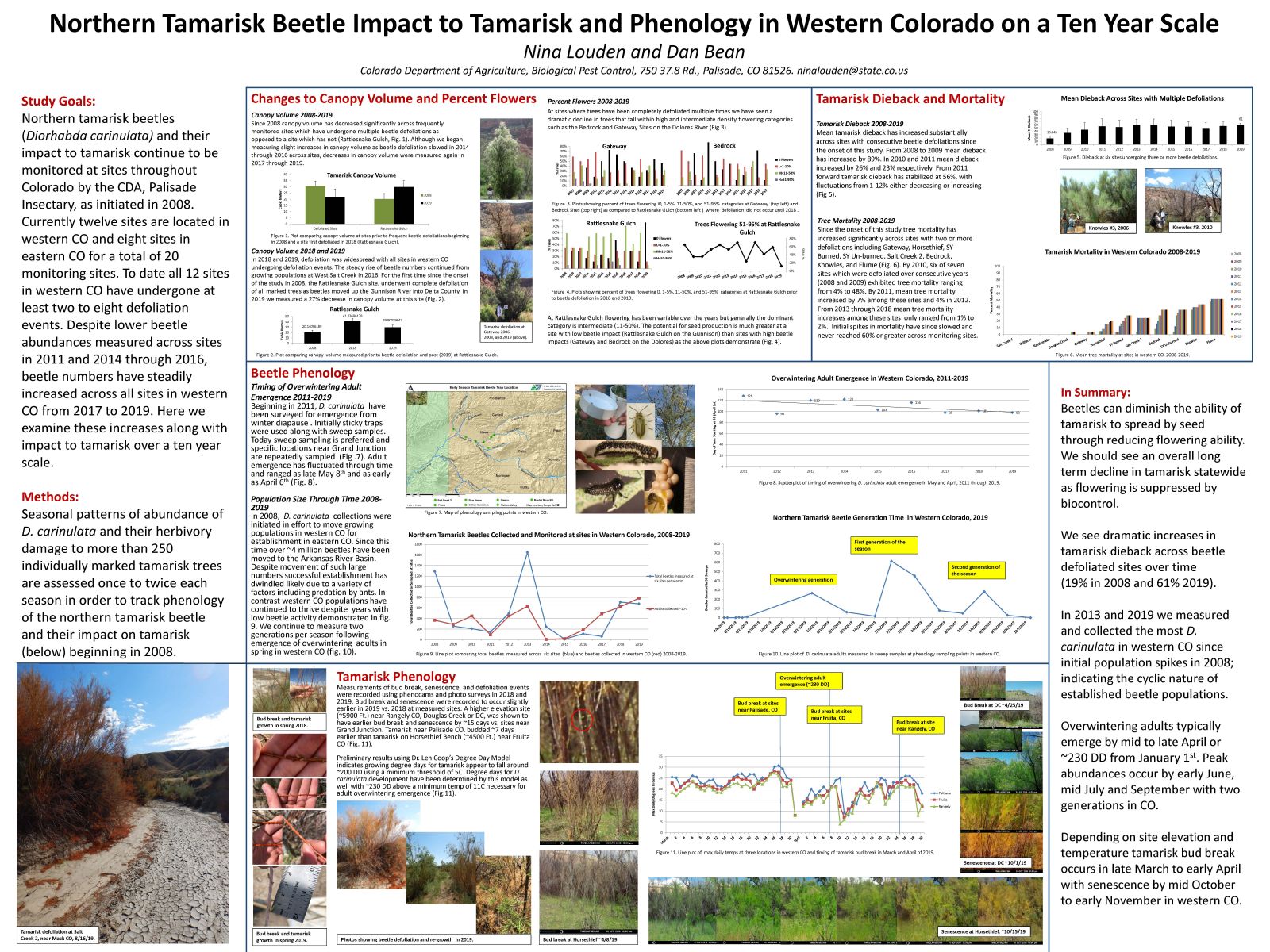Northern Tamarisk Beetle Impact to Tamarisk and Phenology in Western Colorado on a Ten-Year Scale
Nina Louden1 and Dan Bean2
1Colorado Department of Agriculture, Biological Pest Control, 750 37.8 Rd., Palisade, CO 81526, USA; Nina.Louden@state.co.us
2Colorado Department of Agriculture, Biological Pest Control, 750 37.8 Rd., Palisade, CO 81526, USA; Dan.Bean@state.co.us
Northern tamarisk beetles (Diorhabda carinulata) and their impact to tamarisk continue to be monitored at sites throughout Colorado by the CDA, Palisade Insectary as initiated in 2008. Currently, twelve sites are located in western CO and eight sites in eastern CO for a total of 20 monitoring sites. To date, all 12 sites in western CO have undergone at least two to eight defoliation events. Despite lower beetle abundances measured across sites in 2011 and 2014 through 2016, beetle numbers have steadily increased across all sites in western CO from 2017 to 2019. In 2018 and 2019 beetles were observed moving up the Gunnison River into the town of Delta which has never been observed despite multiple years of beetle releases at the Rattlesnake Gulch Site. Increases in tamarisk dieback have occurred across defoliated sites with sites undergoing multiple defoliations ranging in dieback from 40%-70%. Tree mortality has shown more variable (0-52%) at an average of 21%. Finally decreasing tamarisk flowers resulting from beetle herbivory have reduced the mean number of trees to flower by 57% with defoliated sites never reaching more than 40% flowers per canopy as had initially been observed and continuously measured at Rattlesnake Gulch previous to beetle arrival. To date, beetle establishment has resulted in long term and cost-effective control over tamarisk invasion in the west. Here we examine their impacts in western CO over a ten year period along with emerging patterns of beetle population dynamics.

